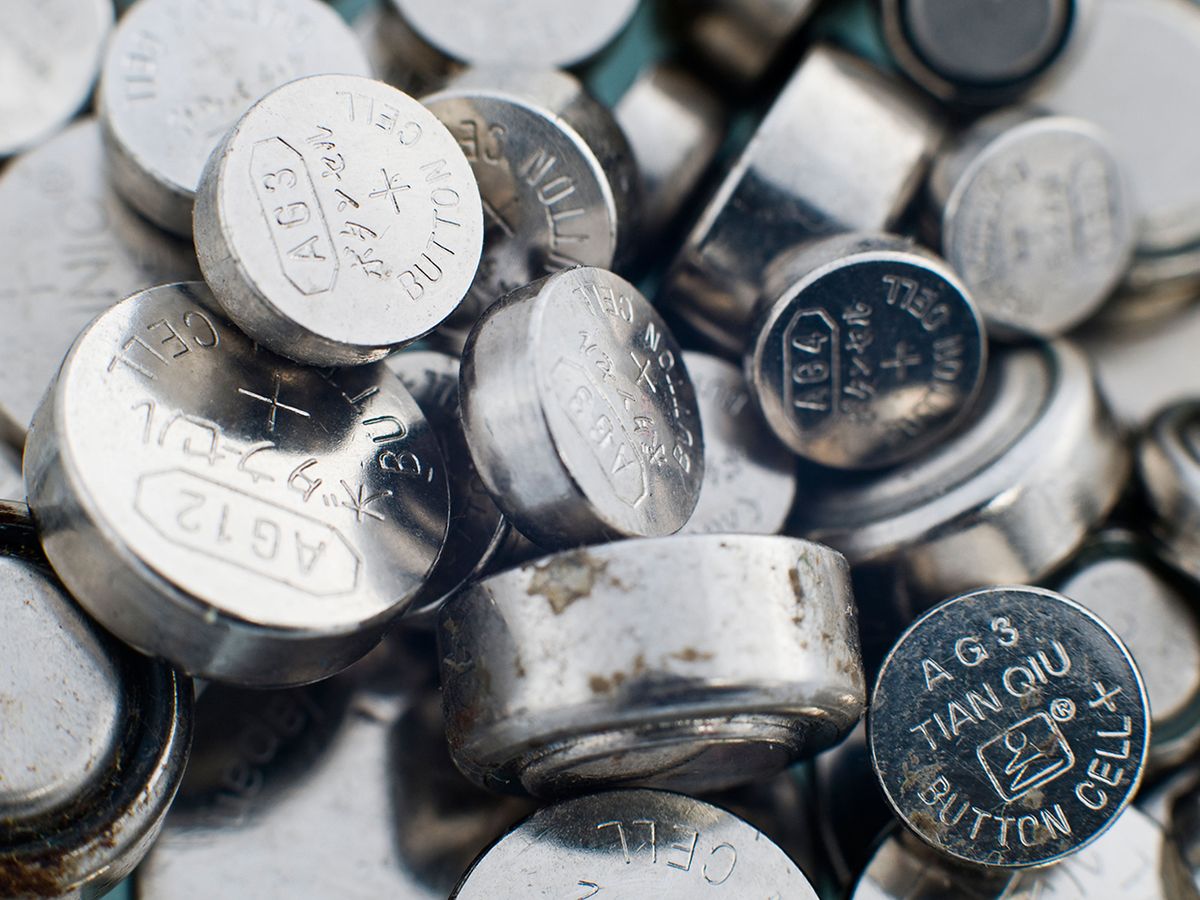Button batteries are the lifeblood of modern portable electronics, but they can also be death traps for small children. A startup called Landsdowne Labs is developing a new kind of pressure-sensitive coating to make them safer.
The company’s 'battery armor' is made of silicon laced through with metal microparticles. In the low-pressure environment of a child’s esophagus, it renders inert these squat cylindrical batteries found inside remote controls, flashlights, musical greeting cards and toys of all kinds.
But because of a phenomenon known as a quantum tunneling, the material, when squeezed between the contact points of a battery compartment, still allows current to flow through. “It’s essentially a waterproof insulating coating that, when you apply force to it, converts into a conductor,” explains Jeff Karp, a bioengineer at Brigham Women's Hospital in Boston.
Karp, along with MIT’s Bob Langer, developed the technology and cofounded the company, which opened its offices today in Fairfield, CT.
The Landsdowne glaze is thus designed to turn button batteries—which are currently chemical burn hazards waiting to happen—into household items about as dangerous as the coins spilling over from a change jar.
A toddler who gets a penny or quarter trapped in the esophagus generally can wait a few hours and the coin will dislodge itself, pass into the gastrointestinal tract, and out the other end; in some cases, a doctor may need to remove the obstruction, but there’s usually no rush to get to an ER because the coin is not blocking the airways and the child can still breath.
Not so with button batteries. If one of these battery cells stops going and going—as the old Energizer tagline goes—and gets stuck in the food pipe, it will begin to conduct an electrical current, which raises the pH of the surrounding tissue. Within a few hours, if not removed, it can burn a hole through the esophagus, causing permanent damage and in some cases death.
According to the National Poison Data System, battery ingestion accounts for more than 3,000 hospital emergency department visits annually in the United States. A handful of children die each year from swallowed batteries and dozens more suffer serious injuries—a problem that seems to be on the rise owing to the shift in the industry away from older zinc and alkaline technologies and toward higher-voltage and larger-diameter lithium cells.
Gary Smith directs the Center for Injury Research and Policy at Nationwide Children’s Hospital in Columbus, OH, and has studied the issue of battery-related ER visits, concluding there is a “need for increased prevention efforts.”
Among those efforts: a national Button Battery Task Force; educational campaigns to raise awareness about the risks of battery ingestion; child-resistant packaging and warning labels; and the use of tiny screws to lock battery compartments found in toys for young children.
Collectively, these initiatives are aimed at reducing the incidence of button battery injuries in children. But with more and more portable electronics in our lives, there are more and more small batteries in our homes for children to inadevertly stick in their mouths and swallow.
Public service announcements simply aren’t enough, says Smith. “In the injury prevention field, the most effective solutions are those that design the problem out of existence.”

Landsdowne’s battery coating may do just that. When tested in pigs, standard 1.4 Volt hearing aid batteries started to cause tissue peeling and cell death inside the porcine esophagus after just two hours of contact, whereas similar exposure to the coated batteries caused no such injuries.
Bob Altabet, a former head of business management at Duracell who now does market research on the battery industry, thinks the big battery manufacturers will be receptive to the technology. “Some of it obviously depends on the cost versus benefit, but in principle they would all be inclined to do things that promote safety,” he says—adding that “the moment one of them does it, they’ll all do it, because they’ll be worried about the liability consequences.”
Melissa Fensterstock, Landsdowne’s CEO, agrees. “There is pressure and there is interest in implementing a solution that can save lives,” she says. But, she notes, among the company’s investors in its initial funding round of close to $3 million, none were battery makers.
In discussions Fensterstock had with battery companies about adding the coating technology to their products, she was told that “if it’s a penny or less [to manufacture] they’d be willing to entertain it,” she says. That’s well within Fensterstock’s projections—and with billions of button batteries produced globally each year, even penny royalties can add up to huge profits for Landsdowne, she notes.
In addition to the battery coating, the company is also developing another invention from the Karp and Langer labs: a quick-release medical tape that can be removed without damaging delicate skin. The first application will likely be in the NICU, where premature babies often need to have respirators and other medical devices secured to their paper-thin skin. After that could come pain-free adhesive tape for a broader consumer market: “The next logical application for this technology is in the wearable space,” Karp says.
Elie Dolgin is a science writer specializing in biomedical research and drug discovery. After a PhD spent studying the population genetics of nematodes, he swapped worms for words—entering journalism as an editor at The Scientist, Nature Medicine, and STAT. Now a freelancer, Elie is a frequent contributor to New Scientist, Nature, IEEE Spectrum, and more.



